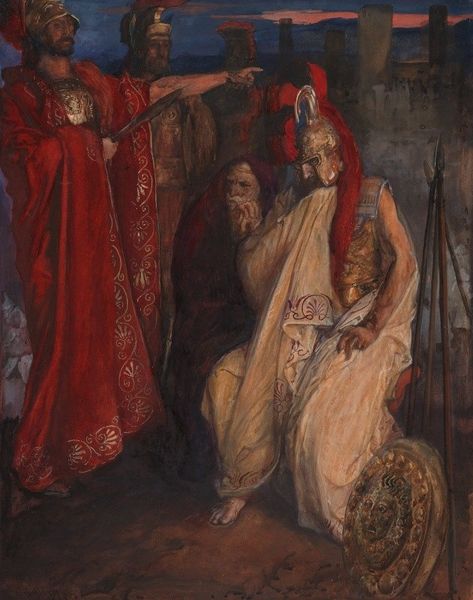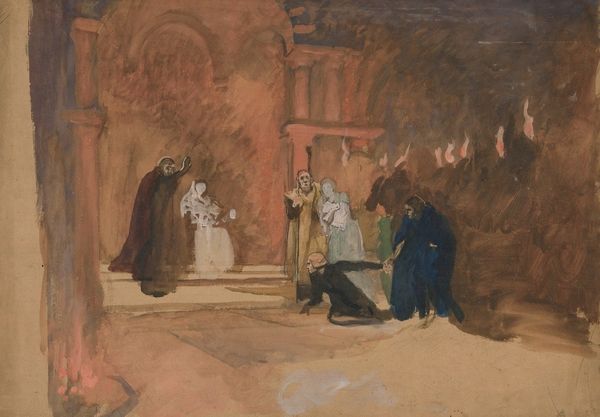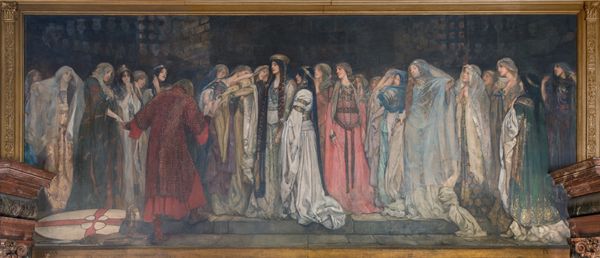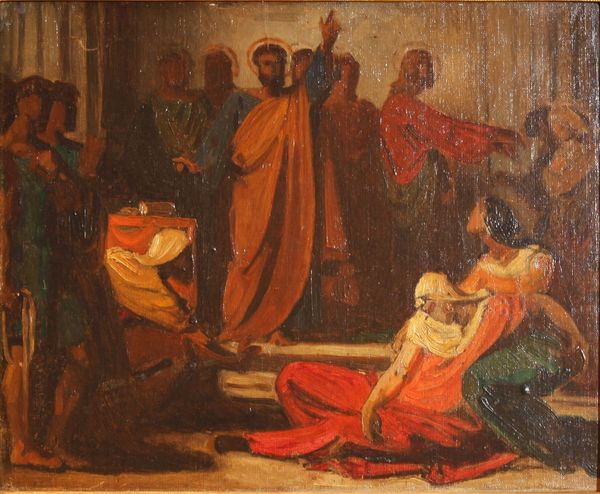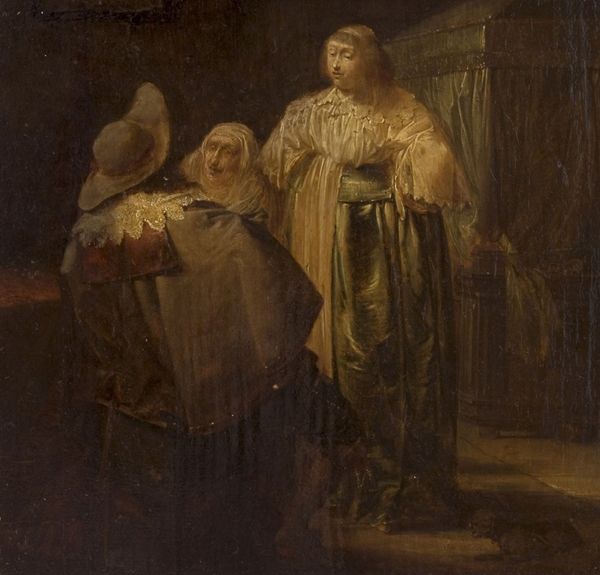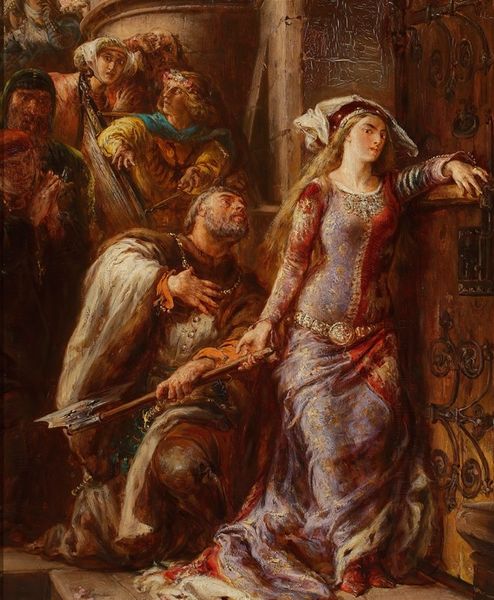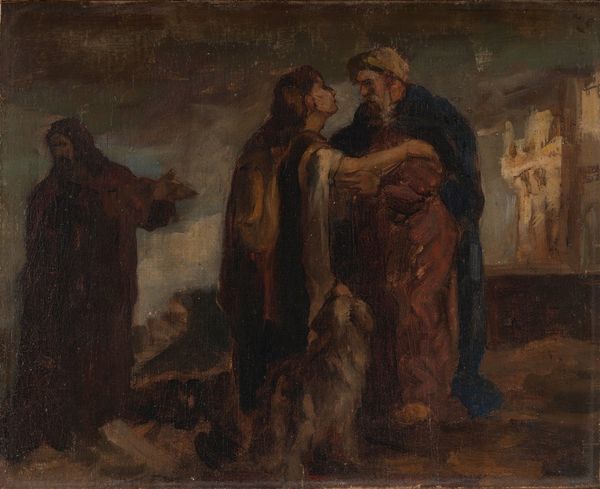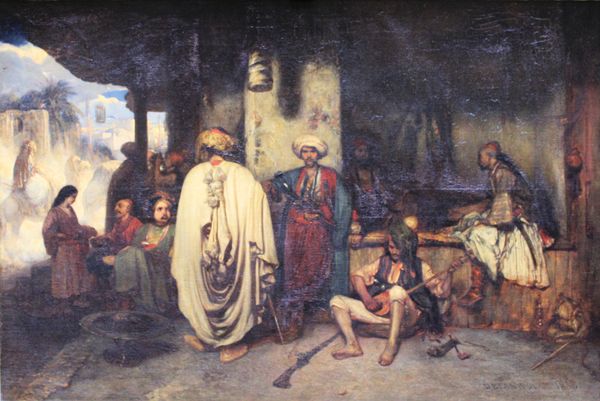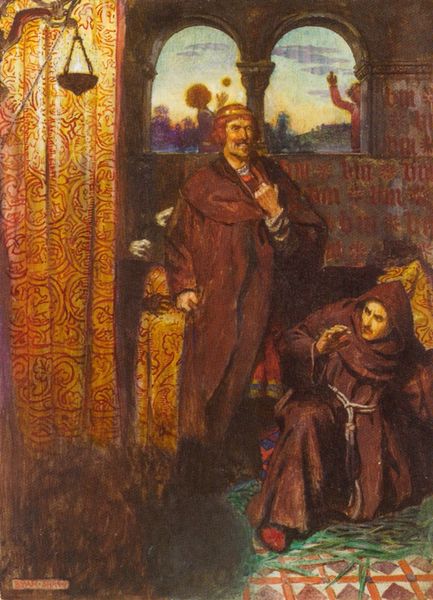
Copyright: Public Domain: Artvee
Editor: Edwin Austin Abbey’s 'King Lear, Act I, Scene I' painted in 1898 using oil paint is quite striking. The scene feels dense and theatrical, dominated by reds and heavy costumes. What kind of historical context can you share regarding how it may have been received or interpreted during its time? Curator: This piece arrives amidst a late 19th-century surge in historical painting, often linked to national identity formation and the romanticization of the past. What's curious here is how Abbey uses Shakespeare – already a loaded cultural figure – to tap into discussions of power, loyalty, and perhaps, the anxieties of a changing social order. The museum’s acquisition and display of the piece also plays into how Shakespeare, and particularly *this* interpretation, could become a form of cultural capital. Does the theatricality you mention feel reverent or critical to you? Editor: I think it feels… both? Like it's embracing the drama of royalty but also subtly questioning it. Are there other visual cues that hint at a particular political reading? Curator: Look at the composition. The emphasis on Lear’s performance, alongside the looming, almost spectral figures observing him. It prompts questions: Who benefits from this display? What societal functions does it serve? Furthermore, where might this scene reflect contemporaneous class tensions that existed during its commission and initial exhibition? Editor: That’s fascinating. I hadn't considered how much the act of viewing, both within the painting and of the painting, contributes to its meaning. Curator: Exactly. And reflecting on that role illuminates our understanding, making history come alive again. Editor: I appreciate that deeper understanding, it is very helpful!
Comments
No comments
Be the first to comment and join the conversation on the ultimate creative platform.
